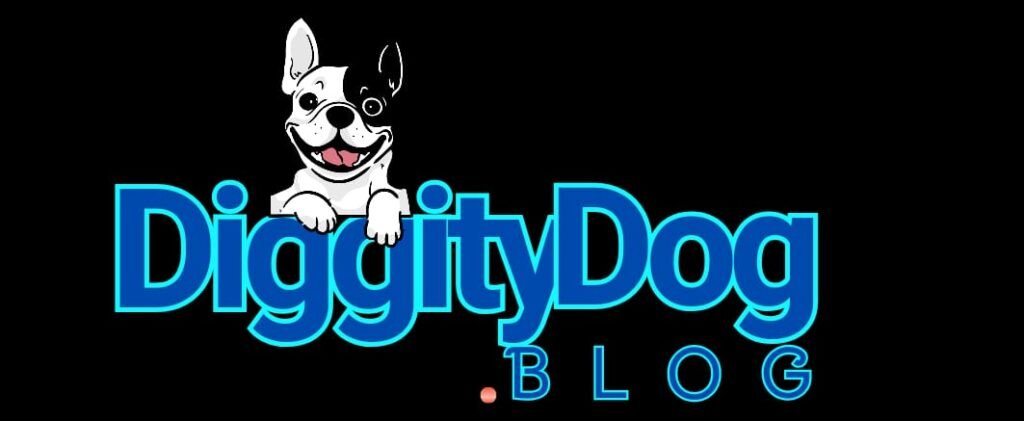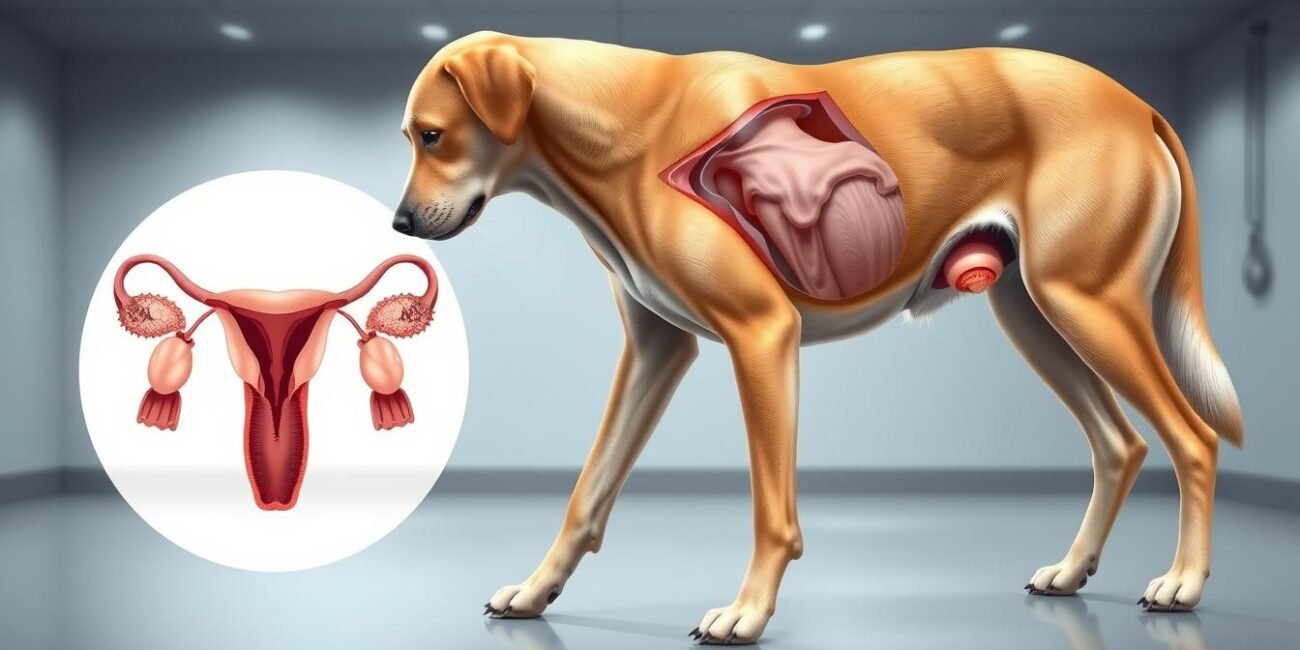How Long Will a Female Dog Be in Heat?
Understanding the reproductive cycle of an unspayed female dog is essential for pet parents. This cycle, often referred to as being in heat, is a natural process that prepares the dog for potential pregnancy. Unlike humans, this cycle does not occur monthly and can vary significantly depending on the breed and individual factors.
During this time, the female dog experiences hormonal changes that signal her readiness to mate. The cycle typically includes stages like proestrus, estrus, and diestrus, each with distinct characteristics. Knowing what to expect can help owners manage their pet’s health and behavior effectively.
Common questions about the duration and frequency of this cycle often arise. For instance, smaller breeds may enter heat earlier than larger breeds, and the cycle’s length can range from two to four weeks. This article will explore these details to provide clarity for pet owners.
Key Takeaways
- The reproductive cycle of an unspayed female dog is called being in heat.
- This cycle does not occur monthly and varies by breed and individual.
- Smaller breeds may enter heat earlier than larger breeds.
- The cycle typically lasts between two to four weeks.
- Understanding the stages of the cycle helps manage your pet’s health.
Introduction to Dog Heat Cycles
The reproductive cycle of a female dog, known as being in heat, is a natural process that differs significantly from human cycles. Unlike monthly menstruation, this cycle occurs once or twice a year, depending on the breed and individual factors. This unique timing is essential for pet owners to understand, as it directly impacts their dog’s health and behavior.
Most dogs experience this cycle every 5 to 11 months, with smaller breeds often entering heat earlier than larger ones. The average duration of a dog heat cycle ranges from two to four weeks, during which hormonal changes signal the dog’s readiness to mate. Observing these changes can help owners monitor their pet’s reproductive health effectively.
During this time, the cycle is divided into distinct stages, each with its own characteristics. These stages include proestrus, estrus, and diestrus, which we’ll explore in detail later. For now, it’s important to note that understanding the timing and signs of these stages is crucial for managing your pet’s well-being.
As a pet owner, recognizing the frequency and duration of your dog’s cycle can help you prepare for her needs. Whether it’s providing extra care or preventing unwanted pregnancy, this knowledge is invaluable. In the following sections, we’ll dive deeper into each stage and offer practical tips for navigating this natural process.
Understanding the Female Dog Reproductive Cycle
The estrous cycle in dogs is a critical aspect of their reproductive health. Unlike humans, this cycle is not monthly but occurs once or twice a year. It is divided into distinct phases, each driven by specific hormonal changes. Understanding these phases helps pet owners manage their dog’s health effectively.
The cycle begins with proestrus, lasting about 7 to 10 days. During this phase, the female dog is not receptive to mating. Hormones like estrogen rise, preparing the body for potential pregnancy. Physical signs, such as swelling and discharge, may appear.
Next is estrus, the fertile phase. This stage lasts around 5 to 14 days, during which the dog is receptive to mating. Hormone levels peak, and ovulation occurs. Owners should be cautious during this time to prevent unwanted pregnancy.
The final phase, diestrus, lasts 60 to 90 days. Whether or not mating occurs, the body prepares for pregnancy. If no pregnancy happens, the cycle ends, and the dog enters anestrus, a resting period that can last several months.
| Phase | Duration | Key Characteristics |
|---|---|---|
| Proestrus | 7-10 days | Swelling, discharge, not receptive to mating |
| Estrus | 5-14 days | Receptive to mating, ovulation occurs |
| Diestrus | 60-90 days | Prepares for pregnancy, ends if no conception |
This cycle differs significantly from human reproductive processes. Hormones like estrogen and progesterone play a central role, driving both physical and behavioral changes. Recognizing these differences is essential for providing proper care.
By understanding the estrous cycle, owners can better anticipate their dog’s needs. Whether it’s monitoring health or planning for breeding, this knowledge is invaluable. In the next sections, we’ll explore each phase in greater detail.
How Long Will a Female Dog Be in Heat?
The duration of a dog’s heat cycle is a common concern for pet owners. On average, this cycle lasts between two to three weeks. However, this time frame can vary depending on factors like breed, age, and individual health.
Most dogs experience their first heat cycle between 6 to 24 months of age. Smaller breeds tend to start earlier, while larger breeds may take longer. Understanding these differences helps owners prepare for their pet’s needs.
The cycle is divided into distinct phases, each with its own duration. The proestrus phase, marked by swelling and discharge, typically lasts 7 to 10 days. The estrus phase, when the dog is receptive to mating, ranges from 5 to 14 days.
Here’s a quick breakdown of the phases and their durations:
| Phase | Duration | Key Characteristics |
|---|---|---|
| Proestrus | 7-10 days | Swelling, discharge, not receptive to mating |
| Estrus | 5-14 days | Receptive to mating, ovulation occurs |
| Diestrus | 60-90 days | Prepares for pregnancy, ends if no conception |
Cycle frequency also varies. Most dogs go into heat twice a year, with an average interval of about seven months. However, some breeds, like the Basenji, may only have one cycle annually.
Factors like age and health can influence the cycle. Older dogs may experience longer intervals between heats. Monitoring these patterns helps owners manage their pet’s reproductive health effectively.
By understanding the typical duration and frequency of a dog’s heat cycle, owners can provide better care. Whether it’s preventing unwanted pregnancy or ensuring comfort, this knowledge is essential for responsible pet ownership.
Phases of the Dog’s Heat Cycle
The heat cycle of a female dog is divided into distinct phases, each with unique characteristics. Understanding these phases helps pet owners manage their pet’s health and behavior effectively. The cycle includes proestrus, estrus, diestrus, and anestrus, each marked by specific hormonal and physical changes.
Proestrus: The Beginning
The first phase, proestrus, lasts about 7 to 10 days. During this time, the vulva swells, and there may be a bloody discharge. The female is not yet receptive to mating, but hormonal changes are preparing her body for the next phase.
Estrus: The Fertile Phase
Estrus follows proestrus and is the fertile period. This phase lasts 5 to 14 days, during which the female is receptive to males. Ovulation occurs, and the discharge may change in color and consistency. Owners should take precautions to prevent unwanted pregnancy during this time.
Diestrus and Anestrus: The Resting Stages
After estrus, the cycle enters diestrus, which lasts 60 to 90 days. Whether or not mating occurs, the body prepares for pregnancy. If no pregnancy happens, the dog enters anestrus, a resting period that can last several months before the cycle begins again.
| Phase | Duration | Key Characteristics |
|---|---|---|
| Proestrus | 7-10 days | Swelling, bloody discharge, not receptive to mating |
| Estrus | 5-14 days | Receptive to mating, ovulation occurs |
| Diestrus | 60-90 days | Prepares for pregnancy, ends if no conception |
| Anestrus | Several months | Resting period before the next cycle |
Recognizing these phases is essential for understanding your pet’s reproductive health. Each phase plays a vital role in the overall cycle, and knowing what to expect can help you provide better care.
Physical Signs of a Dog in Heat
Recognizing the physical signs of a dog in heat is crucial for pet owners. These indicators help determine when your pet is entering this natural cycle. By observing these changes, you can provide better care and manage her needs effectively.
Swelling and Vaginal Discharge
One of the first signs of a dog in heat is vaginal discharge. This discharge is often blood-tinged and may vary in intensity. Some dogs may bleed more noticeably than others, while others may have a lighter flow.
The discharge typically appears during the proestrus phase, which lasts about 7 to 10 days. As the cycle progresses, the discharge may change in color and consistency, becoming straw-colored during the estrus phase.
Visible Changes in the Vulva
Another clear sign is swelling of the vulva. This area becomes visibly enlarged and may change in color, often appearing darker or redder than usual. These changes are a direct result of hormonal shifts preparing the body for potential mating.
Owners should note that the vulva swelling and discharge are key indicators of the heat cycle. Monitoring these changes helps ensure your pet’s health and comfort during this time.
- Blood-tinged vaginal discharge is a primary sign.
- The vulva becomes visibly swollen and may change color.
- Some dogs may bleed more noticeably than others.
- These signs help owners recognize when their pet is in heat.
Behavioral Changes in Dogs During Heat
Pet owners may notice distinct behavioral patterns in their dog during heat. These shifts are often driven by hormonal changes and signal the fertile phase of the cycle. Understanding these behaviors helps ensure proper care and comfort for your pet.
Increased Attention-Seeking and Restlessness
One common change is increased attention-seeking. Your dog may become more clingy, seeking constant affection or companionship. This behavior is a natural response to hormonal fluctuations.
Restlessness is another frequent change. Your dog may pace, whine, or appear more anxious than usual. These signs indicate her body is preparing for potential mating.
Hormonal shifts play a significant role in these behaviors. Estrogen and progesterone levels rise, influencing mood and activity. Recognizing these patterns helps owners provide the necessary support during this time.
Being vigilant about these behavioral shifts ensures your pet remains comfortable and safe. By understanding these changes, you can better navigate the heat cycle and meet your dog’s needs effectively.
Detecting Heat Through Pheromones and Male Behavior
Chemical signals play a vital role in canine reproductive communication. Female dogs release specific pheromones during their heat cycle, which serve as a natural alert to male dogs. These invisible scents are detected from a considerable distance, often up to three miles away.
When a male dog detects these pheromones, his behavior often changes significantly. He may become more restless, vocal, or focused on locating the source of the scent. This heightened interest is a direct response to the chemical signals indicating a female’s fertility.
Typical Reactions in Male Dogs
Male dogs exhibit distinct behaviors when exposed to a female in heat. These include increased sniffing, marking territory, and attempts to escape or roam. Such actions are driven by their instinct to find and mate with the female.
- Female dogs release pheromones during heat, signaling fertility.
- Male dogs can detect these scents from miles away.
- Behavioral changes in males include restlessness and vocalization.
- These reactions serve as indirect indicators of a heat cycle.
Understanding this chemical communication helps pet owners recognize when their female dog is in heat. Observing the behavior of male dogs in the area can provide valuable clues, even if the female’s physical signs are not immediately obvious.
Veterinary Diagnostic and Health Considerations
Monitoring your pet’s reproductive health during her heat cycle is vital for ensuring her well-being. Veterinary diagnostics play a crucial role in identifying potential issues and ensuring your dog remains healthy. From routine tests to recognizing abnormal signs, professional input is invaluable.
Vaginal Cytology Testing
One common diagnostic procedure is vaginal cytology. This test examines cells from the vaginal lining to determine the stage of the heat cycle. During proestrus, red blood cells dominate, while estrus shows a high percentage of cornified epithelial cells. This test is cost-effective and provides clear insights into your pet’s reproductive status.
Recognizing Abnormal Signs
Owners should watch for unusual symptoms, such as excessive bleeding, lethargy, or signs of pain. These could indicate complications like infections or hormonal imbalances. Early detection is key to preventing more serious health issues.
When to Consult Your Vet
If your dog exhibits abnormal signs or if you’re unsure about her cycle, consult your vet. Professional guidance ensures proper care and can prevent risks like pregnancy complications or untreated infections. Regular check-ups are especially important during this time.
| Diagnostic Test | Purpose | Key Insights |
|---|---|---|
| Vaginal Cytology | Determine heat cycle stage | Identifies cell changes during proestrus and estrus |
| Progesterone Testing | Monitor hormone levels | Helps pinpoint ovulation timing |
| Physical Exam | Assess overall health | Detects abnormalities like infections or swelling |
By staying informed and proactive, you can ensure your pet’s health and comfort throughout her heat cycle. Regular veterinary care is essential for managing her reproductive health effectively.
Age, Breed, and Reproductive Maturity Factors
The timing of a dog’s first heat cycle varies significantly based on age and breed. Smaller breeds often reach reproductive maturity earlier, while larger breeds may take longer. Understanding these factors helps pet owners prepare for their pet’s needs.
Most dogs experience their first heat cycle between 6 to 24 months of age. Smaller breeds, like Chihuahuas or Dachshunds, may start as early as 6 months. Larger breeds, such as Great Danes or Saint Bernards, might not enter their first cycle until 18 months or later.
Reproductive maturity is influenced by both genetics and environment. Smaller breeds tend to mature faster due to their shorter lifespans. Larger breeds, with longer growth periods, take more time to reach this stage. This variation is essential for owners to understand when planning for their pet’s health.
Here’s a breakdown of typical age ranges for first heat cycles by breed size:
| Breed Size | Typical Age Range |
|---|---|
| Small Breeds | 6-12 months |
| Medium Breeds | 8-14 months |
| Large Breeds | 12-24 months |
Both age and breed play a crucial role in determining when a dog enters her reproductive cycle. Owners should monitor their pet’s development and consult a vet if they have concerns. Recognizing these patterns ensures proper care and preparation for this natural process.
Variations in Heat Cycle Duration and Frequency
The length and frequency of a dog’s reproductive cycle can vary widely, influenced by factors like age and breed. Understanding these variations helps pet owners anticipate their pet’s needs and manage her health effectively.
Influence of Age and Breed
Smaller breeds often experience their first heat cycle earlier than larger breeds. For example, a Chihuahua may enter her first cycle at 6 months, while a Great Dane might wait until 18 months or later. This difference is due to varying rates of reproductive maturity.
As dogs age, the frequency of their cycles may also change. Younger dogs typically have more regular cycles, while older dogs may experience longer intervals between heats. Monitoring these patterns is essential for maintaining your pet’s health.
Cycle Irregularities and Trends
Not all cycles are identical, even for the same dog. Some may last two weeks, while others extend to four weeks. These irregularities are normal and can be influenced by factors like stress, health, and environment.
For example, a dog might have a shorter cycle one month and a longer one the next. These changes are part of the natural variability in the reproductive process. Owners should keep track of their pet’s cycles to identify any significant deviations.
- Smaller breeds may cycle three times a year, while larger breeds cycle once annually.
- Cycle length can range from two to four weeks, depending on the individual.
- Older dogs may experience longer intervals between heats.
- Monitoring cycle trends helps identify potential health issues.
By understanding these variations, pet owners can better prepare for their dog’s needs. Whether it’s managing her comfort or planning for breeding, this knowledge is invaluable.
Managing a Dog in Heat: At-Home Comfort Tips
Keeping your pet comfortable during her heat cycle is essential for both her well-being and your peace of mind. This time can be challenging, but with the right strategies, you can create a stress-free environment for your dog and maintain a clean house.
Using Dog Diapers and Protective Gear
One of the most effective ways to manage discharge is by using leakproof dog diapers. These are designed to keep your house clean while ensuring your pet remains comfortable. Choose diapers that fit snugly but don’t restrict movement.
In addition to diapers, consider using protective gear like washable pads or blankets in your pet’s resting area. This extra layer helps absorb any leaks and makes cleanup easier.
Creating a Safe and Clean Space
Designate a specific area in your home for your pet during this cycle. This space should be easy to clean and free from hazards. Use washable bedding and keep the area well-ventilated to ensure comfort.
Frequent cleaning is key. Wipe down surfaces daily and wash bedding regularly to maintain hygiene. This way, you can prevent odors and keep your home fresh.
“A clean and comfortable environment helps reduce stress for both the pet and the owner.”
Here’s a quick guide to managing your pet’s heat cycle at home:
| Tip | Description |
|---|---|
| Use Diapers | Leakproof diapers help manage discharge and keep your home clean. |
| Designate a Space | Create a specific area with washable bedding for your pet’s comfort. |
| Clean Frequently | Wipe surfaces and wash bedding regularly to maintain hygiene. |
| Provide Reassurance | Offer extra affection and attention to keep your pet calm. |
By following these tips, you can ensure your pet’s comfort and maintain a clean home during this natural process. Remember, a little preparation goes a long way in making this time easier for both of you.
Preventing Unwanted Pregnancy and Considering Spaying Options
Preventing unwanted pregnancy is a top priority for responsible pet owners. During the heat cycle, a female dog is fertile and may get pregnant if exposed to a male dog. Taking proactive steps ensures her health and avoids unexpected litters.
One of the most effective ways to prevent pregnancy is by controlling contact with male dogs. Keep your pet indoors or in a secure area during her heat cycle. Avoid walks in public spaces where other dogs may be present. Supervision is key to preventing accidental mating.
Spaying is the definitive method to prevent your dog from being able to get pregnant. This surgical procedure removes the reproductive organs, eliminating the heat cycle entirely. According to experts, spaying also reduces the risk of certain health issues, such as uterine infections and mammary tumors.
“Spaying not only prevents unwanted litters but also promotes long-term health for your pet.”
Here are some practical tips for managing your pet’s reproductive health:
- Use secure fencing or leashes to prevent unsupervised interactions.
- Consider spaying before the first heat cycle for maximum health benefits.
- Consult your vet to discuss the best timing and approach for spaying.
Discussing spaying options with your vet is essential. They can provide personalized advice based on your pet’s age, breed, and overall health. Early spaying is often recommended, as it minimizes risks and ensures a smoother recovery.
By taking these preventive measures, you can protect your pet’s health and avoid the challenges of an unplanned pregnancy. Responsible pet ownership starts with informed decisions and proactive care.
Addressing Common Concerns and Potential Complications
Being aware of potential complications during your pet’s heat cycle is crucial for her well-being. While this natural process is typically uneventful, certain risks, such as false pregnancy and pyometra, can arise. Recognizing these issues early ensures prompt intervention and better outcomes for your pet.
False Pregnancy: What to Watch For
False pregnancy, or pseudopregnancy, occurs when a dog may exhibit symptoms of pregnancy without being pregnant. This condition is triggered by hormonal changes during the diestrus phase. Common signs include nesting behavior, milk production, and even weight gain.
While false pregnancy is usually harmless, it can cause discomfort or anxiety for your pet. Monitoring her behavior and consulting your vet if symptoms persist is essential. In most cases, the condition resolves on its own within a few weeks.
Pyometra: A Serious Health Risk
Pyometra is a life-threatening infection of the uterus that can occur during or after the heat cycle. This condition is more common in older, unspayed dogs and requires immediate veterinary attention. Symptoms include lethargy, excessive thirst, and unusual discharge.
Early detection is critical, as untreated pyometra can lead to severe complications or even death. Regular check-ups and prompt consultation with your vet at the first sign of trouble can save your pet’s life.
| Complication | Symptoms | Action |
|---|---|---|
| False Pregnancy | Nesting, milk production, weight gain | Monitor behavior, consult vet if persistent |
| Pyometra | Lethargy, excessive thirst, unusual discharge | Seek immediate veterinary care |
Understanding these risks helps you provide better care for your pet. Regular monitoring and proactive veterinary visits are key to ensuring her health and happiness during this natural process.
Practical Tips for Keeping Your Home Clean During Heat
Maintaining a clean house during your pet’s heat cycle requires practical strategies. By implementing a few simple steps, you can manage discharge and keep your living space fresh and comfortable.
Start by using leakproof dog diapers. These are designed to contain messes and prevent stains on furniture or carpets. Choose a size that fits snugly but allows your pet to move freely. Washable covers for furniture and dedicated pet zones can also help minimize cleanup efforts.
Regular cleaning is essential. Wipe down surfaces daily and wash bedding frequently to maintain hygiene. Enzymatic cleaners are particularly effective for removing odors and stains caused by discharge. These cleaners break down organic matter, ensuring a thorough clean.
Here are some additional tips to keep your house spotless:
- Designate a specific area for your pet with washable bedding and easy-to-clean flooring.
- Use washable pads or blankets in resting areas to absorb leaks.
- Vacuum carpets and rugs weekly to prevent hair and odor buildup.
- Consider steam cleaning carpets annually for a deeper clean.
By following these steps, you can create a clean and comfortable environment for both you and your pet. A little preparation goes a long way in managing this natural process effectively.
Preparing for Your Dog’s Next Heat Cycle
Planning ahead for your pet’s reproductive cycle ensures a smoother experience for both of you. By keeping track of her cycle, you can anticipate her needs and provide the best care possible. Start by maintaining a calendar to record the start and end dates of each dog heat cycle. This simple step helps you predict when the next one will occur.
Regular monitoring allows you to adjust your home routines and pet care schedules. For example, during the fertile phase, you may need to limit outdoor activities or supervise interactions with other pets. Noting any variations in duration or signs can also provide valuable insights for discussions with your vet.
Here’s a quick guide to preparing for your pet’s next cycle:
| Tip | Description |
|---|---|
| Keep a Calendar | Record the start and end dates of each cycle to predict the next one. |
| Monitor Behavior | Note any changes in signs or duration for vet discussions. |
| Adjust Routines | Limit outdoor activities during the fertile phase to prevent unwanted mating. |
| Prepare Supplies | Stock up on essentials like diapers and cleaning products. |
Preparation is key to maintaining your pet’s health and comfort. By staying organized and proactive, you can navigate her cycle with confidence. Remember, every dog is unique, so tailor your approach to her specific needs.
“A little preparation goes a long way in ensuring your pet’s well-being during her reproductive cycle.”
Finally, consult your vet if you notice significant changes in her cycle or behavior. Early intervention can prevent potential complications and ensure your pet remains healthy and happy. With these tips, you’ll be ready to handle her next dog heat cycle with ease.
Conclusion
Navigating your pet’s reproductive cycle is key to ensuring her health and well-being. This article has explored the phases of the dog heat cycle, highlighting the importance of recognizing each stage for proper care. From physical signs like swelling and discharge to behavioral changes such as restlessness, understanding these indicators helps you support your pet effectively.
Preventive measures, including spaying, play a crucial role in avoiding unwanted pregnancy and reducing health risks. Consulting your vet for guidance ensures your pet’s safety and long-term well-being. By staying informed and proactive, you can manage this natural process with confidence.
In summary, knowledge of your dog’s reproductive cycle empowers you to provide the best care. Use this time to strengthen your bond and ensure her comfort. For any uncertainties, always seek professional advice to keep your pet healthy and happy.
FAQ
What is the typical duration of a dog’s heat cycle?
The heat cycle usually lasts between 2 to 4 weeks, with variations depending on the dog’s age, breed, and health.
What are the physical signs that a dog is in heat?
Common signs include swelling of the vulva, bloody discharge, and increased licking of the genital area.
How often does a female dog go into heat?
Most dogs experience heat every 6 to 8 months, though this can vary by breed and individual factors.
Can a dog get pregnant during the first heat cycle?
Yes, a dog can become pregnant during her first heat, but it’s not recommended due to her young age and incomplete maturity.
How do male dogs react to a female in heat?
Male dogs may become more restless, aggressive, or attracted to the female due to pheromones released during her heat cycle.
What should I do if my dog shows abnormal signs during heat?
If you notice excessive bleeding, lethargy, or unusual discharge, consult your vet immediately to rule out complications like pyometra.
How can I manage my dog’s heat cycle at home?
Use dog diapers, keep her space clean, and provide extra comfort to minimize stress and mess during this time.
What are the risks of not spaying my dog?
Unspayed dogs face risks like unwanted pregnancies, pyometra, and mammary tumors. Spaying can prevent these health issues.
How does breed affect the heat cycle?
Smaller breeds may go into heat more frequently, while larger breeds often have longer intervals between cycles.
Can I prevent my dog from going into heat?
Spaying is the most effective way to prevent heat cycles and associated behaviors or health risks.
Source Links
- What To Know About Dogs in Heat – https://www.webmd.com/pets/dogs/how-tell-if-dogs-heat
- Estrous Cycles in Dogs | VCA Animal Hospitals – https://vcahospitals.com/know-your-pet/estrus-cycles-in-dogs
- Your dog’s seasons | The Kennel Club – https://www.thekennelclub.org.uk/health-and-dog-care/health/health-and-care/a-z-of-health-and-care-issues/seasons-and-being-in-heat/
- Dog estrous cycles – https://www.vet.cornell.edu/departments-centers-and-institutes/riney-canine-health-center/canine-health-information/dog-estrous-cycles
- Dog – Reproduction, Heat Cycle, Breeding | Britannica – https://www.britannica.com/animal/dog/Reproductive-cycle
- Understanding Dogs in Heat: A Comprehensive Guide for Pet Owners – https://www.careanimalclinic.com/blog/1273546-my-dogs-in-heat-now-what
- Estrus and Mating in Dogs | VCA Animal Hospitals – https://vcahospitals.com/know-your-pet/breeding-for-pet-owners-estrus-and-mating-in-dogs
- Dogs in Heat: When It Happens, How Long It Lasts, and What To Do – https://www.petmd.com/dog/general-health/dog-in-heat
- Dogs in Heat: How Long It Lasts and What to Expect – https://www.carecredit.com/well-u/pet-care/dogs-in-heat/
- How Long Is A Dog In Heat? Ultimate Guide To The Canine Estrous Cycle | Kingsdale Animal Hospital – https://www.kingsdale.com/how-long-is-a-dog-in-heat-ultimate-guide-to-the-canine-estrous-cycle
- How Long are Dogs in Heat? – Whole Dog Journal – https://www.whole-dog-journal.com/health/how-long-are-dogs-in-heat/
- Do dogs have periods? All about female dogs’ heat cycles – https://www.ellevetsciences.com/pet-care/do-dogs-have-periods-all-about-female-dogs-heat-cycles/?srsltid=AfmBOooAWEfDsBRmj4ZKyewUe7W83RcZoJ4fPoEc2o_K95Swv-UyBIzx
- Tell-tale signs your dog’s about to go into heat and how to comfort her and prevent an unwanted pregnancy – https://www.businessinsider.com/guides/pets/how-often-do-dogs-go-into-heat
- Look for These 7 Signs That Your Dog Is in Heat – https://www.thesprucepets.com/signs-your-dog-is-in-heat-3385379
- Delaying a Spay: Dog Behavior While In Heat | Preventive Vet – https://www.preventivevet.com/dogs/what-to-expect-when-dog-is-in-heat
- Dogs in Heat: Frequently Asked Questions | Four Paws – https://www.fourpaws.com/pets-101/health-and-wellness/female-dogs-in-heat
- Signs Your Dog is in Heat and How to Care for Them – https://www.pumpkin.care/blog/dog-in-heat/
- How long is a dog in season? In-depth guide to your dog’s first season – https://www.myfamilyvets.co.uk/a-guide-to-your-dogs-first-season
- What To Expect When Your Dog Is in Season – https://veterinarypartner.vin.com/doc/?id=11652016&pid=19239
- Monitoring of the Estrous Cycle in Female Dogs – WSAVA 2016 Congress – https://www.vin.com/apputil/content/defaultadv1.aspx?pId=19840&catId=105889&id=8249806&ind=518&objTypeID=17
- How Long Does a Dog Stay in Heat? – PetWellClinic – https://www.petwellclinic.com/wp/2021/10/22/how-long-does-a-dog-stay-in-heat/
- Estrous Cycles in Dogs | VCA Canada Animal Hospitals – https://vcacanada.com/know-your-pet/estrus-cycles-in-dogs
- No title found – https://www.akc.org/expert-advice/dog-breeding/dog-is-ready-to-breed/
- How Often Do Dogs Go into Heat? Understanding the Estrous Cycle – https://www.heartofthecanine.com/blogs/blog/how-often-do-dogs-go-into-heat-understanding-the-estrous-cycle
- What To Expect When Your Dog Is in Heat – https://www.thesprucepets.com/heat-cycle-for-dogs-3385378
- How Long are Dogs in Heat | Exploring How Long & How Often Do Dogs Go into Heat During Their Cycle – https://www.embracepetinsurance.com/waterbowl/article/is-your-dog-in-heat
- How Long Does a Dog Stay in Heat? Stages, Duration, and Care Tips – https://basepaws.com/dog-insider/how-long-does-a-dog-stay-in-heat
- Dog in Heat a Guide for Paw Rents | Pet Doctor of Chandler – https://www.petdoctoraz.com/blog/dog-in-heat-a-guide-for-paw-rents
- Dog in heat? Everything you need to know about your dog’s heat cycle – https://www.pitpat.com/doggy-insights/dog-in-heat-everything-you-need-to-know/?srsltid=AfmBOopMYdakVY5TpXLiRr4yncZcbvMZwkGgkZAOornSisXmdE2U3tVu
- How to Care for Your Dog in Heat – https://figopetinsurance.com/blog/how-care-your-dog-heat
- How to avoid female dog pregnancy? – Dr.Pashu App – Best Online Vet Consultation App in India – https://drpashu.com/how-to-avoid-female-dog-pregnancy/
- Can a Dog Be Spayed While in Heat? | Sunset Animal Hospital – https://sunsetanytime.com/blog/can-a-dog-be-spayed-while-in-heat/
- Is it better to spay the dog before or after the first heat? – Parliament Animal Hospital
- Understanding Female Dog’s Heat Cycle – https://paworigins.com/blogs/vet-blogs/understanding-female-dogs-heat-cycle
- Dog Vagina Health Guide: Everything You Need to Know – https://www.petmd.com/dog/general-health/dog-vagina-health-guide
- How to Comfort a Dog in Heat [Most Effective Methods] – https://www.holistapet.com/blogs/dog-care/how-to-comfort-a-dog-in-heat?srsltid=AfmBOopMnshHu0O0jwuDBihA2ydvEjdTy3If7DnQFjnIkNz-eS8zzIvz
- Steam Away the Challenges: House Cleaning Strategies for Dog Heat Season – https://www.fortador-usa.com/blog/dog-heat-season-cleaning?srsltid=AfmBOoq4riKKj_8VxPvFajzO1V9WuSffqO_0a7_xHmD3epPJsJ0qMp1I
- How to Keep Your House Clean When a Dog Is in Heat: 10 Simple Tips – Dogster – https://www.dogster.com/lifestyle/how-to-keep-your-house-clean-when-a-dog-is-in-heat
- Caring for Your Dog in Heat: Frequently Asked Questions — Golden Retriever Life – https://www.goldenretrieverlife.com/blog/caring-for-your-dog-in-heat-frequently-asked-questions
- Dog in Heat: How to Tell and What to Do – https://be.chewy.com/preparing-for-a-dog-in-heat/
- How Long Is a Dog in Season? What to Know – https://www.kinship.co.uk/dog-health/how-long-is-a-dog-in-season
- How Long Does A Dog Stay In Heat? (2025 Guide) – https://www.jacksonbackhome.com/how-long-does-a-dog-stay-in-heat/
- How Long Does a Dog Stay in Heat? – https://pottybuddy.co/blogs/potty-buddy-blog/how-long-does-a-dog-stay-in-heat
- Dog Heat Cycle: Timing, Signs & Tips to Help | Dogsee – https://www.dogseechew.in/blog/dog-heat-cycle-timing-signs-tips-to-help
- If your female dog is in heat: what to expect – https://josera.com/en/dog-advisory/if-your-female-dog-heat-what-expect










No Comment! Be the first one.